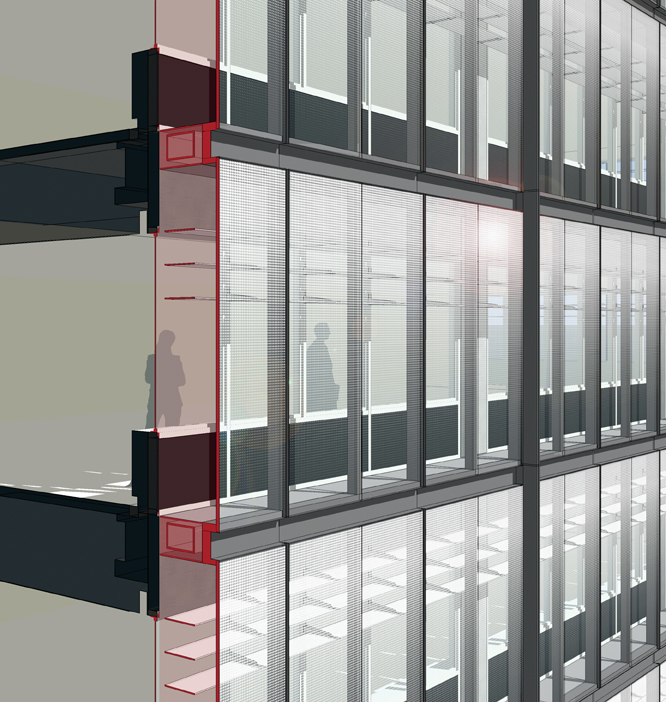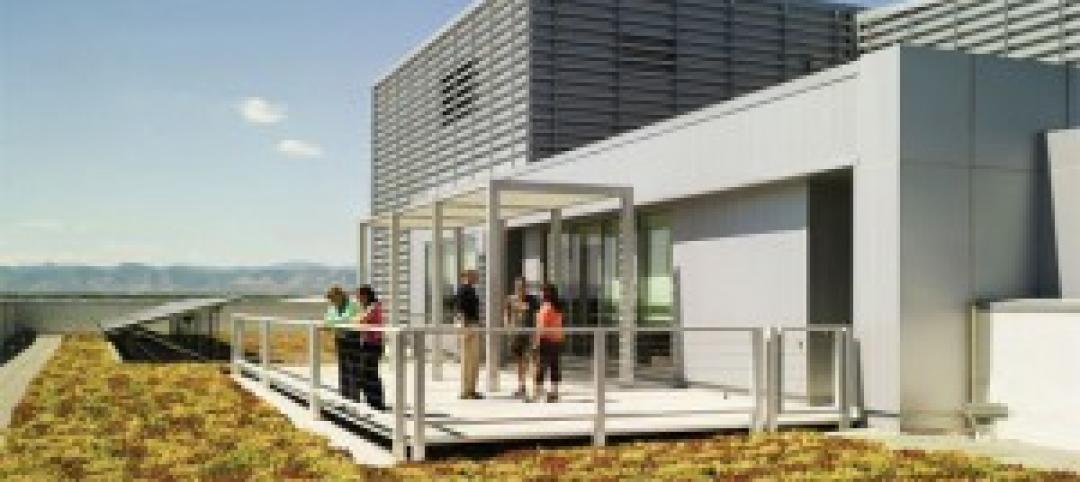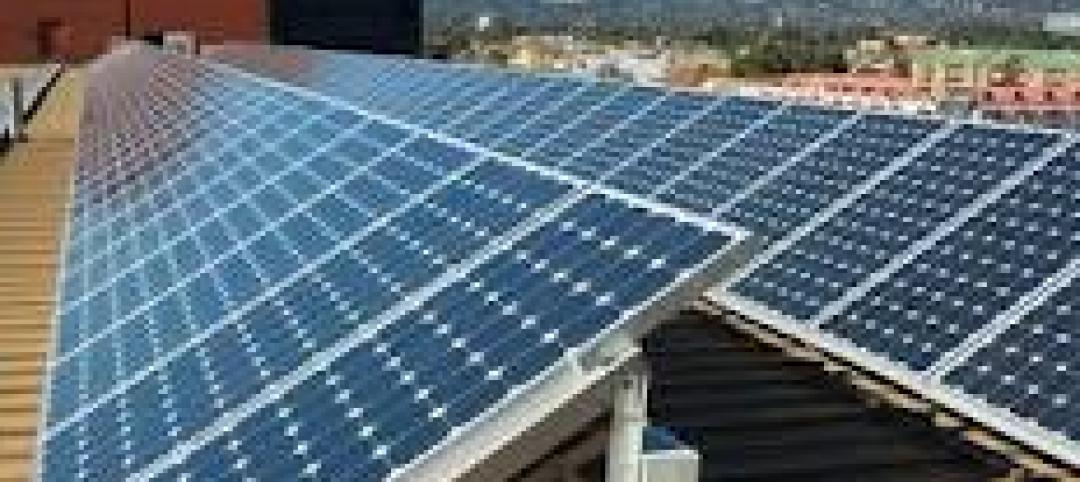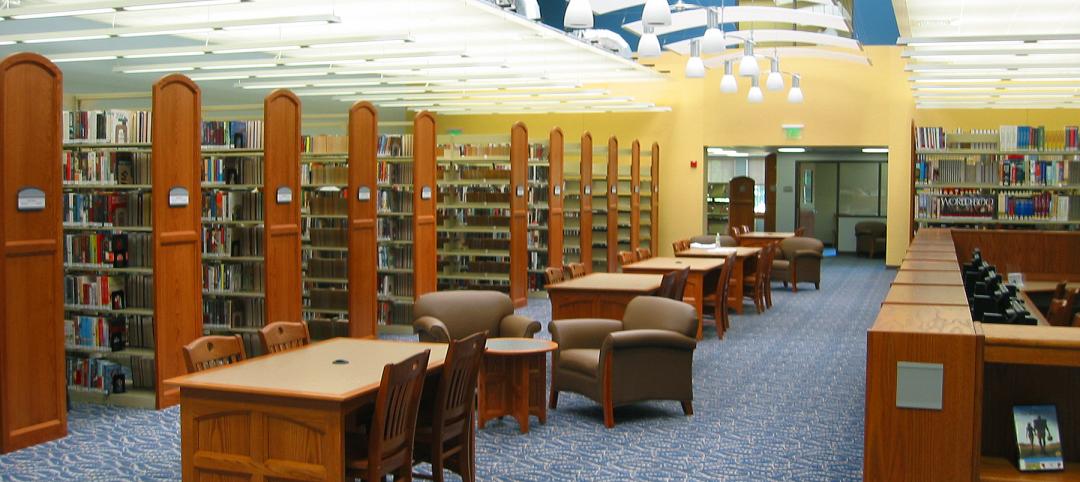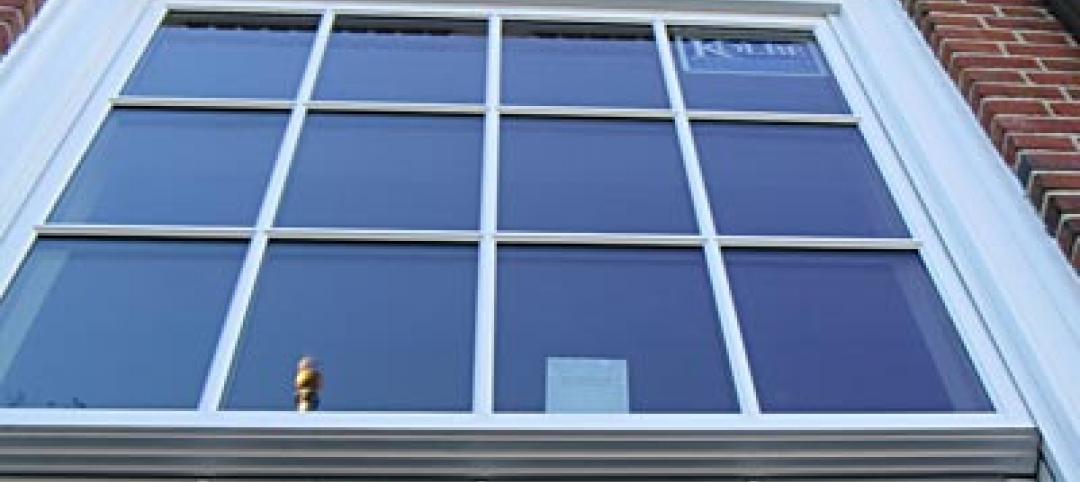The A.J. Celebrezze Federal Building, a 32-story office building in Cleveland, Ohio, was built in the late 1960s for the U.S. General Services Administration. As with many early generation window walls, significant deterioration has occurred over time due to moisture damage from failed drainage systems. This resulted in delamination of exterior wall panels, compromising the air and moisture barrier. The panels had been stabilized with a retrofit, but their effectiveness as a perimeter barrier has reached its limit, as evidenced by the occurrence of frost inside the exterior envelope during winter.
Our firm, Interactive Design, was engaged as the architect to correct the façade deficiencies for the $121 million project, which is funded under the American Recovery and Reinvestment Act of 2009. To mitigate these issues the façade renovation program was focused on four primary requirements: 1) repair/replacement of the building envelope, 2) providing blast protection, 3) upgrading the energy conservation of the envelope, and 4) maintaining full occupancy during construction.
Blast pressure analysis indicated that the frame of the building would accommodate increased loads, but only at the column floor beam connections. Noncomposite slab construction eliminated the transfer of loads via diaphragm. Therefore, new tube beams were added externally to transfer the wind, blast, and gravity loads to these points. Deflection of the tubes under blast conditions may not impact the structural frame. The geometry formulated an exterior configuration two feet, six inches deep, which led logically to the investigation of a double wall assembly.
Originally the project was conceived as an overclad wall system. However, adding an overclad assembly would have extended the volume of interior spaces, resulting in significant fire protection modifications and perimeter air distribution modifications to the existing fan coil units.
MAKING DOUBLE WALL VIABLE
Double wall technology is one of the most complex building envelope forms. Originally developed and employed in Europe, it has been relatively slow in migrating to the U.S. However, higher energy costs are now making these systems more viable. In new construction, the inability to offset the initial high envelope costs through energy savings historically has been the obstacle for double wall usage. Specialized projects, such as museum construction, can justify these initial costs due to constant temperature/humidity requirements. For renovation projects such as the A.J. Celebrezze Federal Building, the existing interior wall can be reused as the interior skin to offset much of the cost delta.
The design process for double walls relies on the integration of all systems. The ventilation environment of the building informs the design. It is imperative that an accurate and robust energy model be developed to assist in the analysis and creation of the double wall. A fundamental challenge was to understand the effect of a double wall upon the existing building. The design team embarked upon an extensive series of computational fluid dynamic studies. Winter, spring/fall, and summer conditions were run in extreme temperature and solar conditions. The purpose of the CFD analysis was to fully understand the temperature relationships in the wall cavity and occupied spaces during seasonal variances.
The architects were able to manipulate glazing layups, light shades, and frit variations to impact the performance characteristics. The design team pursued a variety of critical design paths simultaneously. These included both actively ventilated and sealed cavity conditions.
A significant factor for this project is that the building has historically a very low winter relative humidity. This ultimately permitted a sealed cavity system with no ventilation from either the inside or outside. The temperature and humidity of the internal cavity are allowed to float, so to speak, with its surrounding environments. It acts as a buffer between inside and outside, mitigating the differences between the two without using additional mechanical means, and minimizing energy consumption.
CUTTING ENERGY USE 65%
This system is designed to improve the existing perimeter energy consumption by approximately 65%. It is most efficient to the building during the winter months, when it acts like a thermal blanket and significantly reduces the need for heat from the existing perimeter fan coils. During summer months, shading systems block direct solar gain to the tenant-occupied spaces. The cavity will increase in temperature while not detrimentally affecting the interior environment or the existing mechanical system.
The final configuration is a noncombustible, sealed assembly that requires minimal maintenance. Access to the cavity is provided at each floor by operable interior windows in the inner wall.
The passive double wall system being employed at the A.J. Celebrezze Federal Building is one solution to the growing number of fully occupied buildings that have aging or seriously deteriorated skins. Economic constraints dictate that building owners cannot afford to empty their buildings of tenants to do replacement or maintenance work on façades. Therefore, systems such as this may offer an alternative to complete façade replacement, at the same time lowering energy consumption and enhancing sustainability by preserving existing materials. BD+C
--
Charles Young is a partner with Interactive Design, Inc., an architecture firm based in Chicago. This article is adapted from Chicago Architect, the journal of AIA Chicago.
Related Stories
| Oct 25, 2011
Commitment to green building practices pays off
The study, conducted by the Pacific Northwest National Laboratory, built on a good indication of the potential for increased productivity and performance pilot research completed two years ago, with similarly impressive results.
| Oct 25, 2011
DOE issues report on financing solar photovoltaic systems for K-12 schools
The report examines the two primary types of ownership models used to obtain solar installations. This analysis can help school administrators across the country select the best option for deploying solar technologies in their school districts.
| Oct 25, 2011
MKK participates in BSA Engineering Merit Badge day
MKK principal Craig Watts attended the event as a representative of the MEP (mechanical/electrical/plumbing) engineering industry to give scouts an idea of what’s involved in becoming a mechanical engineer, and an overview of a typical day in the life of an engineer.
| Oct 24, 2011
FMI releases Adjust, Adapt, Act Study
The paper explores several case studies, including Sun Country Builders, Huen, BakerTriangle, Consigli, Skender Construction and Flatiron, and distills the key factors that make these companies unique and successful.
| Oct 24, 2011
BBS Architects & Engineers receives 2011 Sustainable Design Award from AIA Long Island Chapter
AIA LI also recognized BBS with the 2011 ARCHI Award Commendation for the St. Charles Resurrection Cemetery St. Charles Resurrection Cemetery Welcoming and Information Center in Farmingdale, NY.
| Oct 24, 2011
Kolbe adds 3-D models of direct set windows to BIM library?
Beveled Direct Set SketchUp and Revit Models available.
| Oct 20, 2011
UNT receives nation’s first LEED Platinum designation for collegiate stadium
Apogee Stadium will achieve another first in December with the completion of three wind turbines that will feed the electrical grid that powers the stadium.
| Oct 20, 2011
Process leads to new design values for southern pine and other visually graded dimension lumber
A summary of the process used to develop new design values will clarify many of the questions received by the SFPA.
| Oct 20, 2011
Johnson Controls appoints Wojciechowski to lead real estate and facilities management business for Global Technology sector
Wojciechowski will be responsible for leading the continued growth of the technology vertical market, while building on the expertise the company has developed serving multinational technology companies.
| Oct 20, 2011
Stellar hires Navy veteran Taylor as vice president
Stellar’s federal experience includes military exchanges (large retail stores on military bases), lodging facilities for military personnel, fuel stations, youth activities centers and recreational centers.


